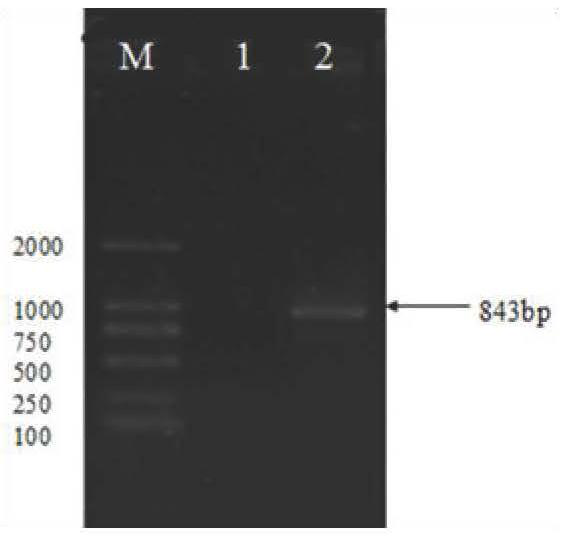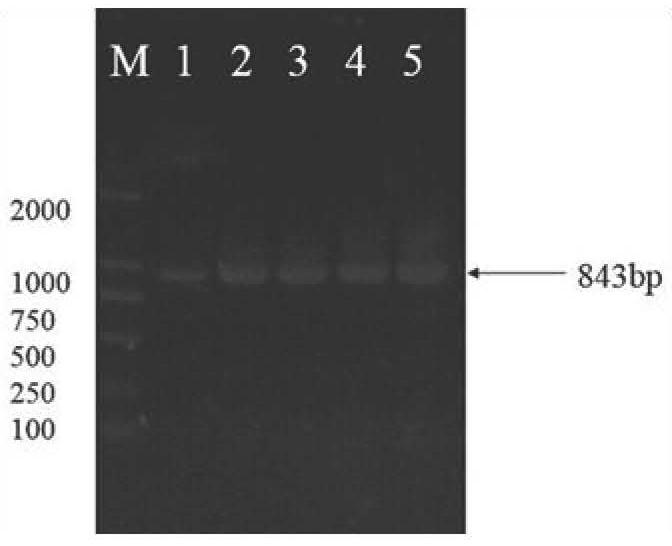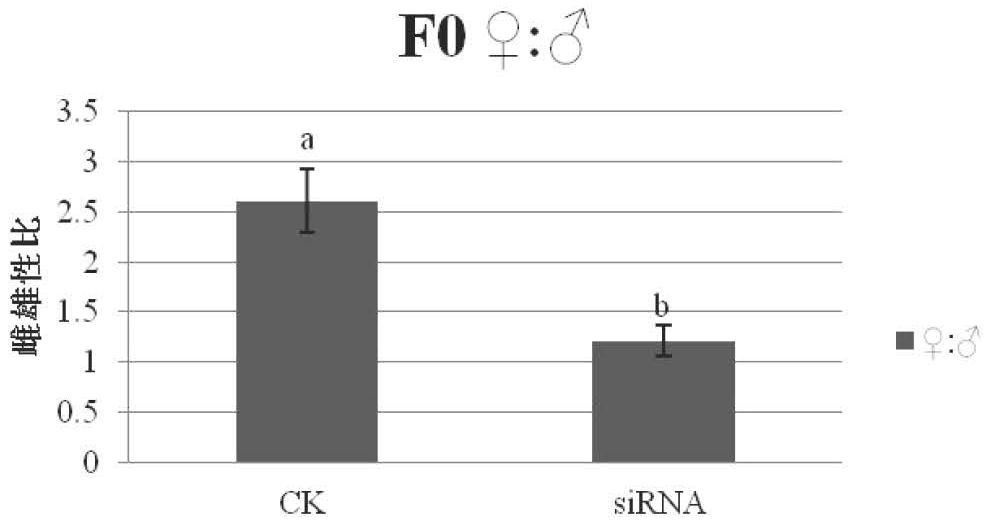Mog-2 Gene of Pine Xylophilus and Its Application in Developmental Disturbance
A technology of mog-2 and pine xylophilus, applied in the fields of application, nematicides, genetic engineering, etc., can solve the problems of embryonic lethality, slow growth of worms, and reproductive system defects
- Summary
- Abstract
- Description
- Claims
- Application Information
AI Technical Summary
Problems solved by technology
Method used
Image
Examples
Embodiment 1
[0038] Cloning of Gene Sequence of Mog-2 Gene of Pine Xylophilus
[0039] (1) Extraction of Pine Xylophilus DNA
[0040] Take the 25°C pine wood nematode NXY61 strain continuously cultured on the PDA medium covered with Botrytis cinerea, and separate the nematodes by the improved Bellman funnel method, adjust the concentration of the nematode liquid to about 2000 heads / mL, and take about 1mL Put the nematode liquid into a 1.5mL centrifuge tube, centrifuge, rinse, and remove the supernatant for later use;
[0041] Use a homogenizer to homogenize the nematodes in the centrifuge tube, and add 180 μL of Buffer GTL;
[0042] Add 20 μL Proteinase K and vortex to mix the sample thoroughly. 56°C water bath until the tissue is completely lysed;
[0043] Add 200μL Buffer GL, vortex and mix well. Add 200 μL of absolute ethanol, vortex and mix well;
[0044] Add all the solution obtained in the previous step into the absorption column that has been loaded into the collection tube, ce...
Embodiment 2
[0084] Based on the results of Example 1, developmental interference was performed using double-stranded siRNA of the mog-2 gene
[0085] (1) Primer design:
[0086] According to the cDNA sequence of the pine xylophilus mog-2 gene obtained in Example 1, the primer sequence of the double-stranded siRNA used for the interference of the pine xylophilus mog-2 gene was designed and sent to the company for synthesis. The designed and applied double-stranded siRNA is located at the CDS sequence of the mog-2 gene of B. xylophilus, specifically:
[0087] mog-2-siRNA-F 5'-GCUUUGACCAACAACAAUUTT-3'
[0088] mog-2-siRNA-R 5'-AAUUGUUGUUGGUCAAAGCTT-3';
[0089] (2) Interference system
[0090] Filter the plate of pine xylophilus cultured for 5-7 days in an incubator at 25°C for 4-6 hours using the Bellman funnel method, collect the nematode liquid at the bottom of the funnel rubber tube about 4 cm, and pick the 2nd instar larvae of pine wood nematode under a microscope. Rinse with steril...
Embodiment 3
[0096] Based on the results of Example 2, the growth and development of pine xylophilus and the development of offspring were inhibited after the developmental interference of pine xylophilus was interfered with by siRNA.
[0097] After mog-2 gene siRNA interfered with the second-instar larvae of B. xylophilus, the sex ratio of the developed contemporary (F0 generation) adults was 1.21, which was significantly smaller than that of the blank control F0 generation adults (2.6075). There was a significant difference in the ratio of males and females between the control group and the blank control group at the level of P>0.05. (attached image 3 )
[0098] mog-2siRNA can affect the male-female phylogeny of B. xylophilus individuals, make B. xylophilus individuals more masculine, and reduce the sex ratio in B. xylophilus populations.
PUM
 Login to View More
Login to View More Abstract
Description
Claims
Application Information
 Login to View More
Login to View More - R&D
- Intellectual Property
- Life Sciences
- Materials
- Tech Scout
- Unparalleled Data Quality
- Higher Quality Content
- 60% Fewer Hallucinations
Browse by: Latest US Patents, China's latest patents, Technical Efficacy Thesaurus, Application Domain, Technology Topic, Popular Technical Reports.
© 2025 PatSnap. All rights reserved.Legal|Privacy policy|Modern Slavery Act Transparency Statement|Sitemap|About US| Contact US: help@patsnap.com



